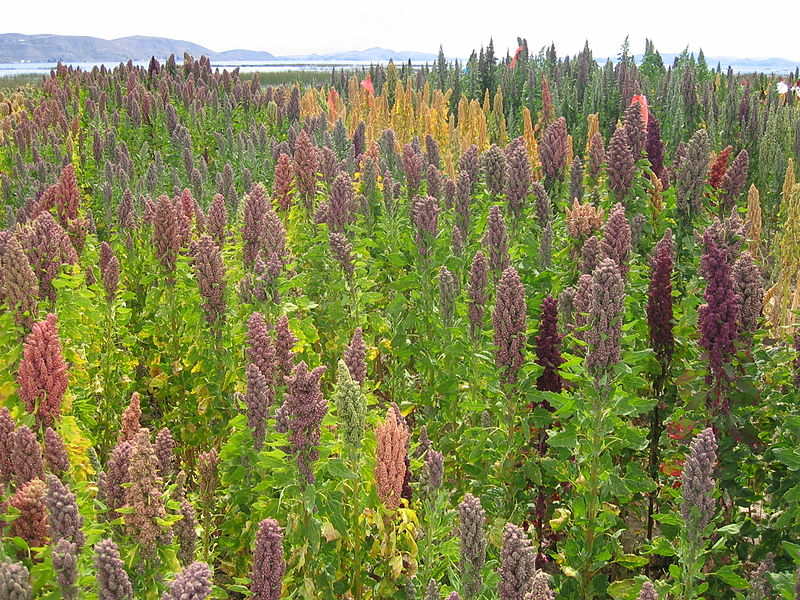
No tasks completed yesterday, so here’s another plant profile instead 🙂
Quinoa (Chenopodium quinoa) is an annual plant from South America, which grows in climates just as hot and dry as ours. Its seeds are edible, and can be used the way you would use rice. They’re very high in protein, so they’re especially good for vegetarians.
Although it’s used as a cereal grain, quinoa is actually a pseudocereal, like amaranth or buckwheat, meaning that it is not a grass. All true grains are grasses; quinoa is actually more closely related to spinach and beetroot. It grows 1 – 2 m tall, with leaves arranged alternately on the woody central stem. The flowering panicles emerge form the top of the plant, and may be white, red, black, or any shade in between.
Quinoa seeds straight from the parent plant are covered in bitter-tasting saponins (soap-like chemicals) which the plant uses to discourage birds form eating the seeds. A thorough wash before cooking renders the seeds far more palatable. It is gluten free, and is considered easy to digest. Just like corn, it can be puffed or rolled into flakes, or you can buy it whole. Whole seeds may be sprouted (2 – 4 hours in water) or cooked.
What quinoa needs:
- Water – Quinoa is drought tolerant. The regions where it grows naturally receive anywhere from 300 – 1000 mm rainfall per year.
- Sunlight – Full sun.
- Soil – Quinoa plants do best in sandy, well-drained soils with a low nutrient content, moderate salinity, and a soil pH of 6 to 8.5.
- Space – Sow quinoa plants 10 – 25 cm apart.
- Warmth – Quinoa can survive temperatures down to -4 degrees C, and up to 35 degrees C. It doesn’t like weather much hotter than that, but has been grown successfully in the Western Australian wheatbelt – so it can clearly survive higher temperatures than 35 degrees.
What quinoa has to offer:
- Edible seeds, and edible leaves (which are similar to silverbeet).
- New plants, from seed.
Images sourced from Wikimedia Commons:
File:Chenopodium_quinoa_in_Cachilaya,_Bolivia,_Lake_Titicaca.JPG